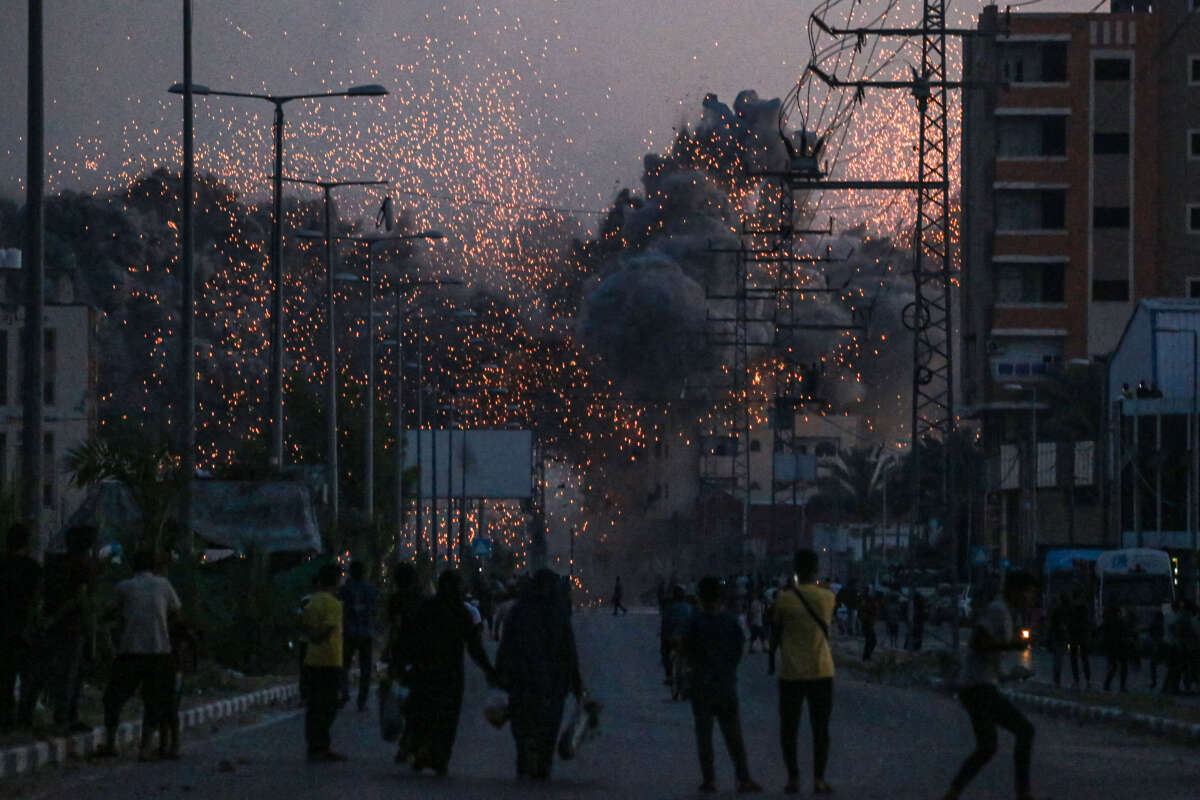Israeli forces authorized the killings of hundreds of Palestinians in Gaza when they were unable to find the exact location of a fighter the military was targeting, a new investigation finds, revealing another layer of Israel’s utter disregard toward civilian deaths in its genocide in Gaza.
An investigation by +972 Magazine and Local Call found that Israeli military officials employed a strategy of bombarding residential blocks, leveling entire buildings, when they couldn’t find Hamas or other military targets and believed the targets were hiding underground.
This strategy, used to “compensate for the amy’s inability to pinpoint targets,” led to some of the most deadly strikes of the genocide, the investigation said.
In at least three of these strikes, Israel killed numerous civilians with multiple 2,000-pound “bunker buster” bombs, without killing their intended target — though, as many Palestinians and commentators have noted, Israel often specifically targets civilian infrastructure or labels civilians, including children, as fighters in order to justify striking them.
Human rights experts have long said that Israel’s use of 2,000-pound bombs on densely populated areas in Gaza likely violates international laws regarding proportionality and avoiding civilian killings, and that the presence of a military target does not nullify Israel’s responsibility to adhere to wartime law.
Military sources said they would conduct such attacks even if they weren’t sure that the target was in the area at all. The targeting of Hamas fighters, however, was important for Israel to sell the narrative of the assault in Israeli media, intelligence sources reportedly said.
In one strike shortly after the genocide began, on October 31, 2023, Israeli forces struck Jabalia refugee camp, for instance, with 300 civilians authorized as acceptable “collateral” damage, the investigation found. The strike, which leveled a residential block, killed at least 126 Palestinians, including 68 children, and supposedly killed the Hamas commander it was targeting.
“The attack turned our house into a mass grave,” Wafa Hijazi, who survived the attack, told +972 and Local Call. “There was terror. Total darkness. And a cloud like a boiling flame that covered the place. That’s how my mother died, and all my sisters and their babies.”
According to military sources interviewed by +972 and Local Call, American officials were involved in coordinating these attacks, with full knowledge of the “collateral” killings of civilians. The strikes were often carried out using U.S. weapons.
These strikes also killed and endangered Israeli captives being held in Gaza, the investigation found. At least three captives were “definitively killed” by this carpet bombing strategy, on November 10, 2023. This is because such strikes release carbon monoxide, flooding underground tunnels with the gas that is fatal if inhaled in high enough amounts — effectively turning a tunnel into a “death trap,” one Israeli military source said.
Angry, shocked, overwhelmed? Take action: Support independent media.
We’ve borne witness to a chaotic first few months in Trump’s presidency.
Over the last months, each executive order has delivered shock and bewilderment — a core part of a strategy to make the right-wing turn feel inevitable and overwhelming. But, as organizer Sandra Avalos implored us to remember in Truthout last November, “Together, we are more powerful than Trump.”
Indeed, the Trump administration is pushing through executive orders, but — as we’ve reported at Truthout — many are in legal limbo and face court challenges from unions and civil rights groups. Efforts to quash anti-racist teaching and DEI programs are stalled by education faculty, staff, and students refusing to comply. And communities across the country are coming together to raise the alarm on ICE raids, inform neighbors of their civil rights, and protect each other in moving shows of solidarity.
It will be a long fight ahead. And as nonprofit movement media, Truthout plans to be there documenting and uplifting resistance.
As we undertake this life-sustaining work, we appeal for your support. We have 6 days left in our fundraiser: Please, if you find value in what we do, join our community of sustainers by making a monthly or one-time gift.
